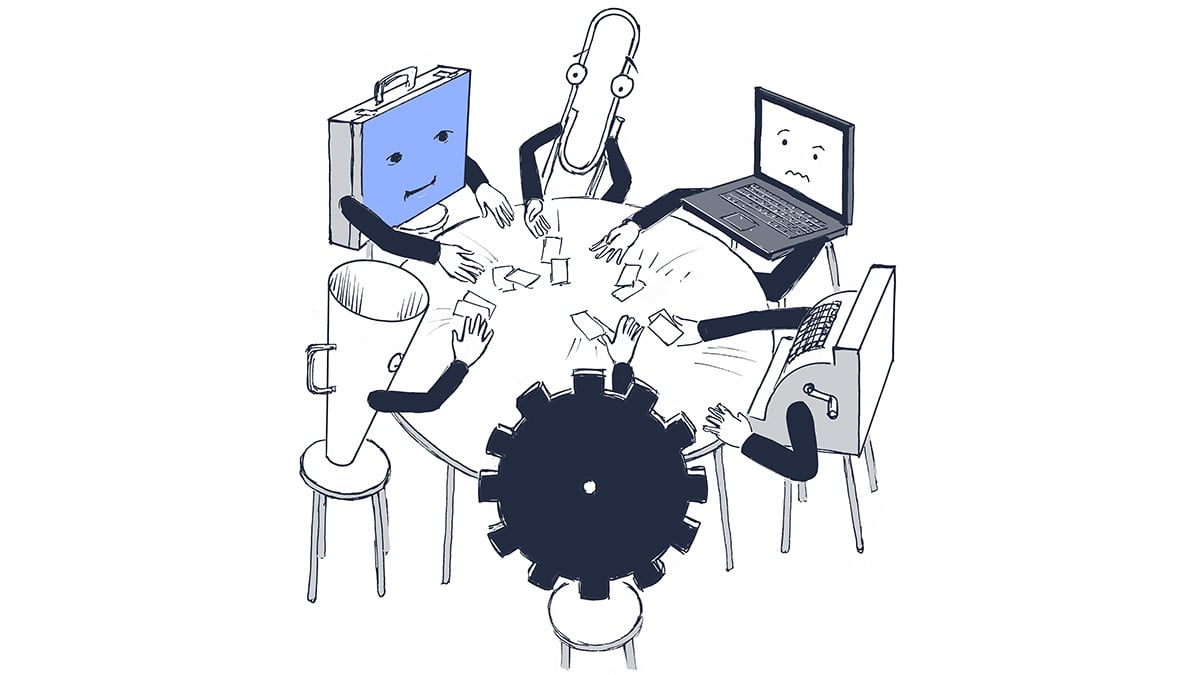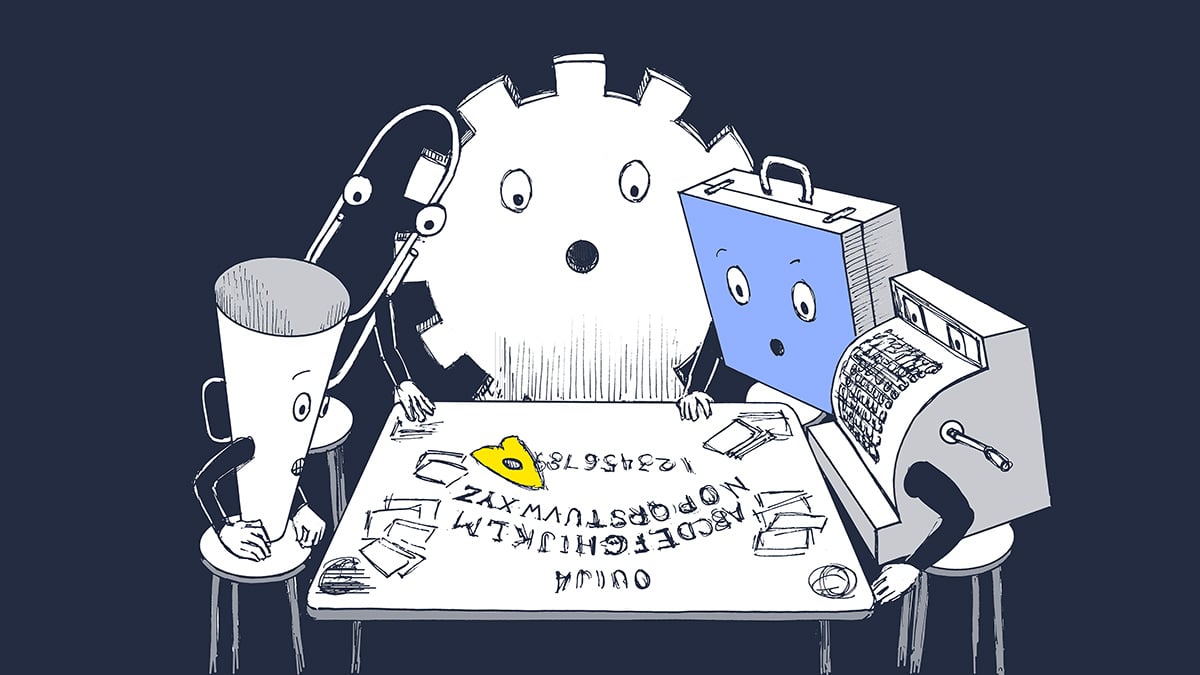It's been hours at the conference table with the other department heads. Everyone can see the issues. One by one the departments folded from the discussion. Now it’s just you, the head of IT, director of sales, and head of operations.
The office manager and head of customer service have withdrawn to watch what new outcome will be inflicted upon them. The VP of marketing is sitting this one out. IT thinks you are bluffing again. Sales is arguing there is no limit to the investment needed. Operations has so much at stake in the game that they have no choice but to be committed.
But you are all in. Are you playing poker? No. But it feels like it.
This narrative is the typical high-stakes game companies play when trying to adopt new technologies. The stakes are high, some company departments fold to whatever new technological pain awaits them, some sell technology as a limitless unicorn, some have no choice but to be all in, some bluff to fight change.
Welcome to technology hold ‘em and the science of poker as a real-world guide to making company decisions; how to make informed decisions, trust your instincts when reading a room, and knowing when to fold.
Poker is a study in making better decisions
Why poker? Poker is the only game that most closely resembles the challenges we face today. By leveraging some, but not all, available information, we are making critical decisions daily. A cocktail of data, intuition, skill, and chance. Poker is the same. Poker isn’t rigged to pay the house. Poker isn’t purely chance. To win a poker game is a combination of skills, emotional intelligence, and luck.
In decision-making, poker imitates life. Poker is time-bound — so are the decisions at your company. Poker is a game where you have real monetary risk — something you don’t need to remind any executive or owner. The game of poker includes both visible cards and held cards. Every consideration you make is only partially informed; it is impossible to always have all the information to make the best decision. Poker also includes the human element — bluffing, misrepresentation, aggression, and passive actions. Lastly, chance or luck plays its role in the cards dealt, which feels like every morning to most managers. Some days the cards are nuts, some days you want to fold before your morning coffee.
In her book, The Biggest Bluff, Maria Konnikova, a journalist and psychologist, shares her journey testing this theory and becoming a poker champion in the process. Looking for a strategic thinker for your team? Many poker players are well-known for taking their skills from the poker table to the conference table. Nate Silver of FiveThirtyEight successfully implements poker as a statistician and author predicting 49 out of 50 states of the 2012 United States presidential election. Yes, he didn’t accurately predict the 2016 election, however, he was the only analyst who gave the winner a 28% statistically significant chance of winning.
Poker’s appeal is in the emotional component. According to Mike Caro, “The object of poker is making good decisions.”
Who doesn’t want to make a good decision? So many fail to do so, especially when it comes to implementing new technology.
It’s a miracle any company considers changing their technology with all the challenges that come with it, but despite the disruption, it is worth the investment. Consider this: as of December 2020, 25 percent of surveyed organizations worldwide reported the adoption of distributed cloud technology on a large scale, with 29 percent using distributed cloud solutions on a small scale.
This cultural shift to more agile and intelligent business is powered by technologies such as advanced analytics and SaaS applications. By 2023, digitally transformed organizations are forecast to contribute to more than half of global GDP.
So, why do so many technologies and especially MarTech implementations fail when technology enables companies to transform? Let’s explore leveraging lessons learned at the poker table in the conference room.

Making informed decisions by understanding your work processes
According to statisticians, Coach Pete Carroll should have won Super Bowl XLIX. With five seconds to go in the game, Seattle had the ball on second down and goal at New England’s one-yard line. New England had the worst record that year of allowing opponents to score within two yards of the goal line. The game was Carroll’s to win.
Statistically, the call he made to pass the ball instead of ramming it in over the goal line with a hulk-like linebacker had a 98 percent chance of success. Carroll’s call was an informed decision gone wrong. Seattle fans will never let him forget it, and this particular New England fan is forever thankful.
The next day, Carroll was blasted for the call resulting in what former world-class poker player Annie Duke calls “outcome thinking” defined as the assumption that a decision that leads to a negative outcome is, by definition, a bad decision in her book, Thinking in Bets. According to Duke, outcome thinking “dissuades us from making sound future decisions while reinforcing bad decisions that turned out well thanks to a lucky break.”
Outcome thinking undermines the data-driven decision-making necessary for digital transformation. A Business Application Research Center survey reports that nearly 60 percent of business professionals said managers at their companies base at least half of their decisions on gut feeling or experience.
In poker, you always have knowledge of the cards on the table and the plays your fellow poker players have made before you. This data should inform your bets in play. The same is true for your technology.
Too often new technologies that do not meet needs or workflow are forced upon unsuspecting teams. Executives sign off on new platforms, or stubbornly hold onto old ones, without spending the time to consider the cards — or data — on the table.
Consider:
- Are your company processes codified or documented as they work today?
- Have you outlined your vision of how you’d like your processes to work? Is there a gap between your vision and reality?
- Have you solicited views of the teams involved in these company processes? Do you understand their goals, pain points, and problems that you serve to solve?
- Can you quantify your current processes, measure tangible results and goals?
Influence a successful outcome by reading the room
They call it the “soul read.”
It’s not a new horoscope or the look you get from your significant other when you forgot an important date. The soul read in poker is when you’re making a correct yet difficult decision, and doing it with a confidence that goes above and beyond the available info in the hand. This might feel like your day-to-day responsibility at the company.
Soul reads in poker start with observation. We established that poker is a game of information. Statistically, poker winners collect the most information and assemble that information better than the other players to make correct decisions. Part of the information in poker is known to the player, but the rest is inferred. Great poker players know how to read the room, or table in this case.
The first step a poker player learns before soul reading is reading hands. Reading hands is simply categorizing all hand combinations broadly into groups based on the known card information, or making an informed decision based on quantitative facts. The soul read supplies the qualitative data.
Poker players consider the type of player the person is based on observing their actions. They consider:
- Is the player loose or tight? This is determined by how many hands they play. A player that frequently adds to the pot or plays more than 20% of their hands is considered loose.
- Does the player bet or raise frequently? Aggressive players take the lead on bets and raise while passive players play their hands but don’t bet or raise often.
The Ph.D. journalist-turned-poker-champion Maria Konnikova discovered early in her poker journey that the key was “Less certainty. More inquiry.” The same advice applies when implementing new technology at your company.
Decisions are only as good as the data available and how you “soul read” your team. Unlike poker, you can ask your team members to show their hands, contribute to the conversation, and help quantify success.
Consider:
- Who are the other stakeholders in the decision?
- Who is affected by the proposed technology?
- How do the different stakeholders play? Are they aggressive or passive? Tight or loose?

Knowing when to fold on technology
In the machismo hustle culture that glamorizes winning in business, it’s hard to make the case that sometimes the best answer is to fold and to live to play another day. But that is exactly what a poker player would do.
Consider that most of the players who end up winning in poker play about 18-22 percent of the hands. A professional poker player can expect to win about 60 percent of those hands played. Those are statistically not bad odds.
But that means that the player is walking away from about 80 percent of the hands they are dealt. Does your company walk away from 80 percent of its business prospects to only focus on the best ones? Do you actively disengage from 80 percent of your business opportunities?
Ironically 80% of all businesses fail in the first years. Correlation? Maybe.
Knowing when to fold is critical to any business, but even more important when implementing new technology. Digital transformation is not an epic big-bang event that occurs suddenly, leaving a beautiful new universe in its place. However, this is what software companies would lead you to believe.
Digital transformation is messy and disruptive. It challenges the norms and deeply held beliefs of your team. It often happens in stages over a longer period of time and requires buy-in from all the stakeholders at your company.
Do you know when to fold? Consider:
- The technology solutions on the market don’t meet at least 80% of your companies needs
- Multiple stakeholders are not bought in after a vigorous attempt to soothe doubts and address concerns
- Your team finds itself held hostage by a solutions provider, there should always be multiple solutions or products to consider
- The software provider is inflexible to your company’s use case
In poker, the saying goes “don’t be a fish.” Fishes are players that flop hands, lose pots, and generally are inexperienced and make ill-advised decisions.
When implementing new technology at your company, the advice stands. Don’t implement every new technology on the market at random. Don’t make technology decisions without doing your due diligence, including auditing your current processes, setting measurable goals for your technology, researching solutions, and getting buy-in from your team.
Play the wrong hand, and you’ll find yourself in the muck.



